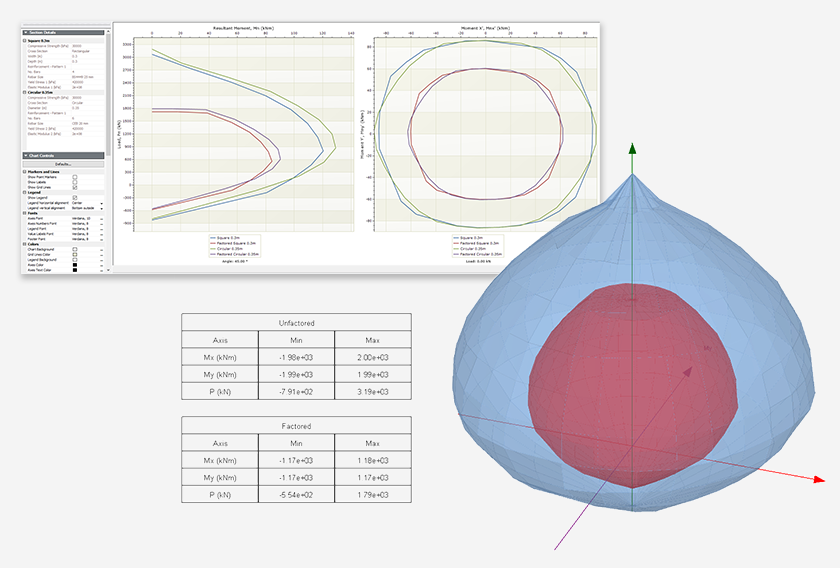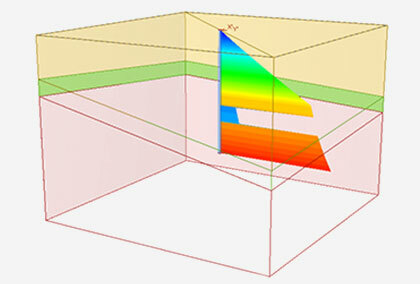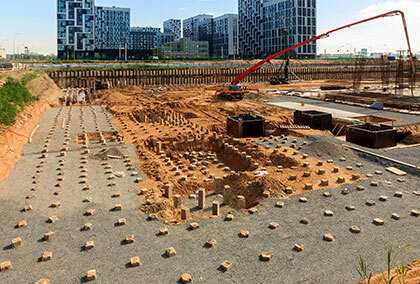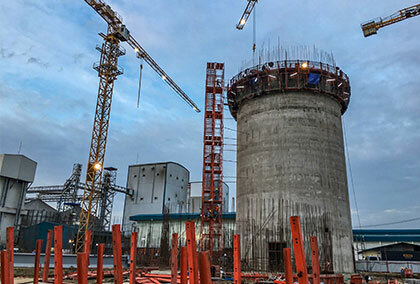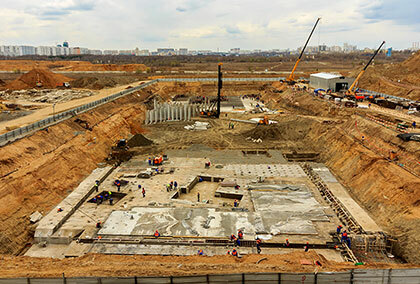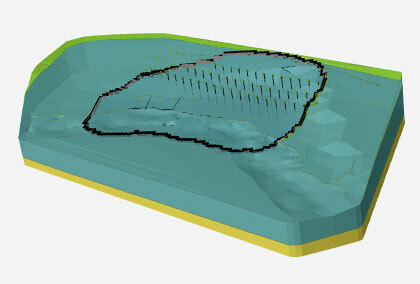Convert LPILE Saved Models to RSPile in One Click
- Ahmed Mufty, Senior Geomechanics Specialist
Based on requests from RSPile users that have switched from using LPILE, there has been a desire for LPILE saved files to be read and run in RSPile. Now, the latest version of RSPile will allow you to do so. LPILE files that are saved version 2022 and any file with the extension “.lp12d” can now be imported and converted easily into RSPile files.
The features that are included now as transferrable to RSPile are:
- All definition of soil layer that exist in RSPile.
- All Pile sections that are available in RSPile.
- Conventional and LRFD loading.
- Lateral Pushover Analysis.
Keep in mind that LPILE is designed only for lateral analysis of piles, which is one of many analysis types RSPile provides. The functionality to convert LPILE files to RSPile allows you to extend your models from solely lateral analysis to be able to account for axial analysis as well. In addition, more boreholes may be added to the model in RSPile, where LPILE only allows for one.
How does it work?
The method in RSPile to read an LPILE file is straightforward and doesn't require any preparations. From RSPile's main menu, simply navigate to "File" and “Open,” and select your LPILE file as you would any other file type.
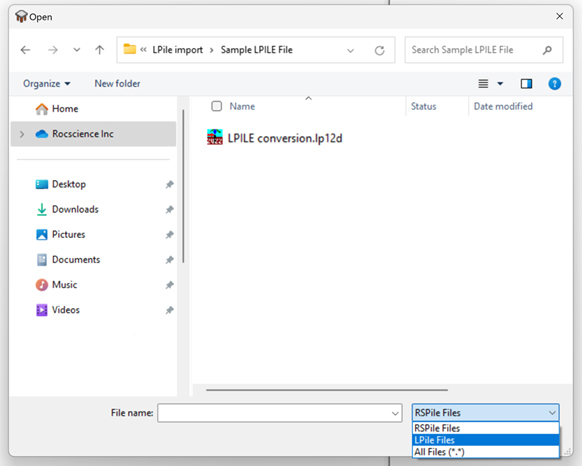
Example of opening and running an LPILE file in RSPile
Creating the LPILE Model
In this example, the LPILE file has the following model parameters:
Pile: elastic pile with 1.2m diameter circular section. Length of pile 22m with free 2m above the ground surface. Modulus for the pile is given as 34000MPa.
Pile loading: the pile is subject to a lateral load of 200kN, and a couple of 50kN.m. Both are at the pile head.
Soil Properties: The ground is made of 4 Soil layers: The top layer is API sand with Kpy of 14000 kN/m3 and angle of internal friction of 34o, followed by a similar layer with Kpy of 30000 kN/m3 and an angle of 38o. The layers have effective unit weights of 7kN/m3 and 9kN/m3 respectively.
A third layer of massive rock having unconfined compressive strength of 20 MPa, Geological strength index GSI of 40, a rock modulus constant mi of 18. The rock modulus is 1000 MPa and a Poisson’s ratio of 0.25. The fourth, bottom layer, is made of massive rock as well but with 12 MPa unconfined strength and a modulus of 600MPa. The unit weight of the rock layers is 14 kN/m3.
Bore Hole: The layer thickness values are 13m, 3m, 2m, and 4m respectively. So the pile ends with 2m installed in the last layer.
These inputs are shown in the LPILE window, shown in Figure 2.
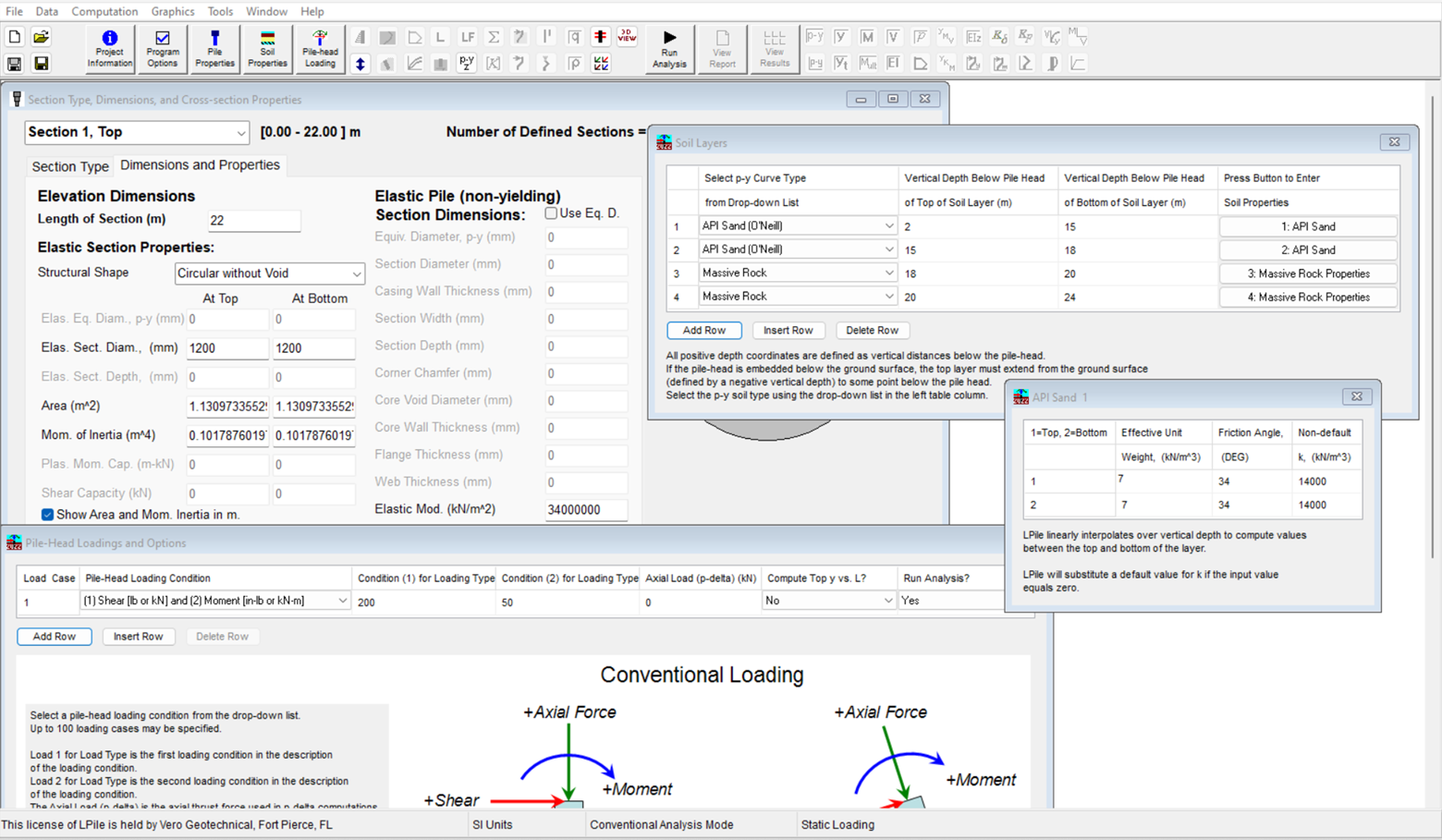
After execution in LPILE, the LPILE model can be saved in a folder on the computer.
Opening the LPILE file in RSPile
The LPILE file can be opened in RSPile and saved again as an RSPile file.
Once opened, the transformed file input values will immediately show in the RSPile model (Figure 3), which shows the main layout of the pile and ground layers. Figure 4 shows the corresponding input windows in RSPile that are transformed from the LPILE model.
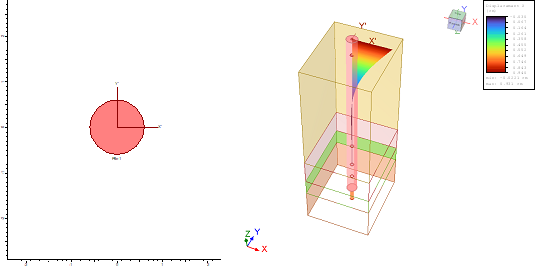
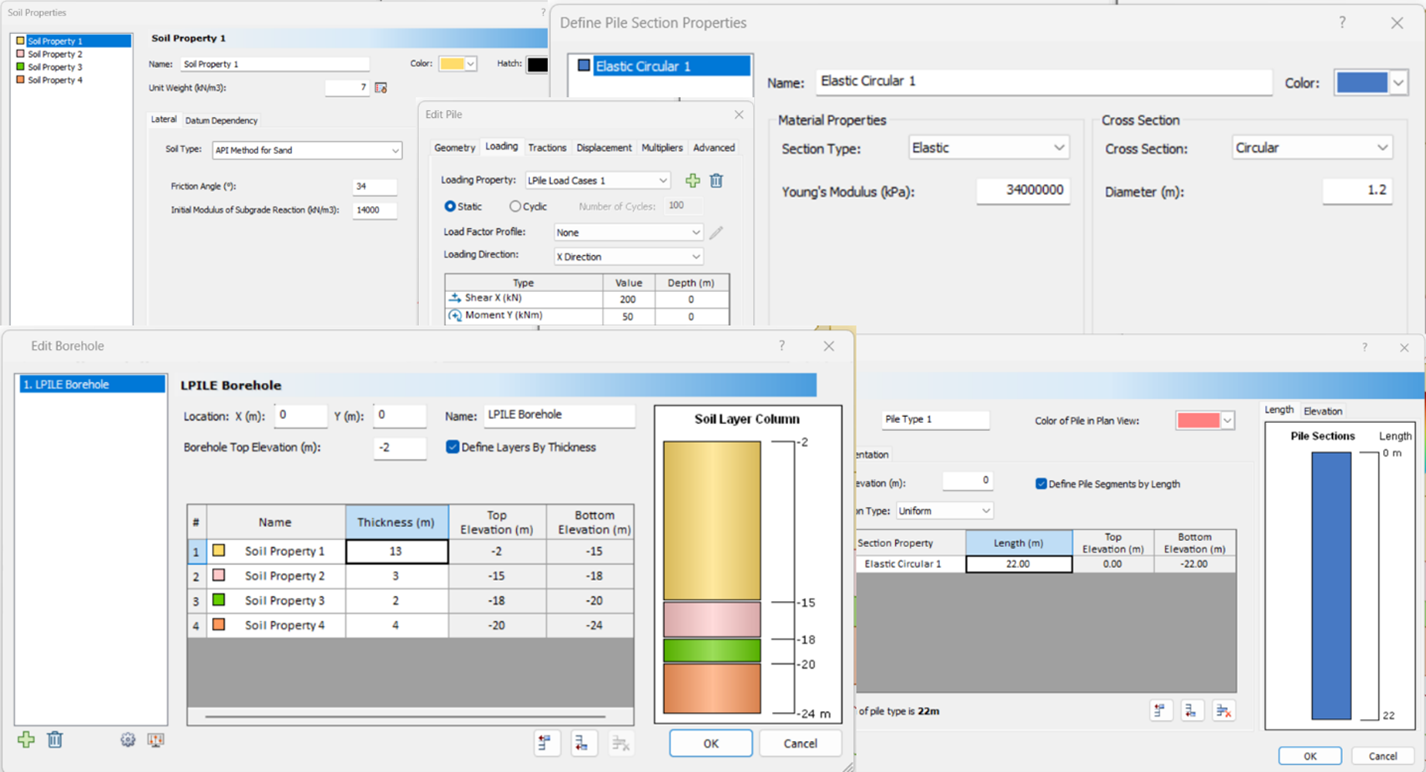
Comparing the Results
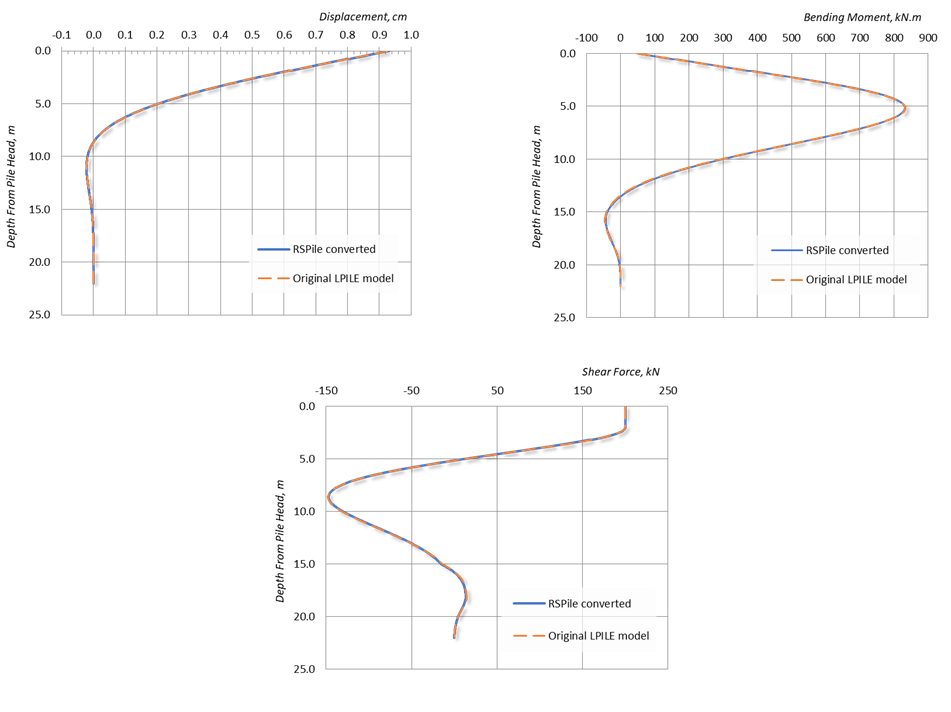
The results from the LPILE model are schematically shown together in Figure 5. The maximum deflection at the pile head was 9.25mm. The maximum bending moment was found to be 833 kN.m at about 3.1m below ground surface (5.1m below pile head).
The results in RSPile were very close where the maximum deflection is 9.31mm and maximum bending moment is found to be 832kN.m at about 3.2m below ground surface (5.2m below pile head).
The comparison may be better depicted by plotting the deflection, shear force and bending moment distributions along the pile, see Figure 5.
The differences are negligible and they are probably due to the applied numerical solution procedure.
Concluding Remarks
Moving forward, traditional LPILE models may be opened using RSPile. Most of the LPILE cases can be transformed and there will be a guide for how the conversion is completed. RSPile will notify the user with the guide during conversion. The conversion capability from LPILE to RSPile will make users of LPILE capable of running their old LPILE files with their new RSPile software.
